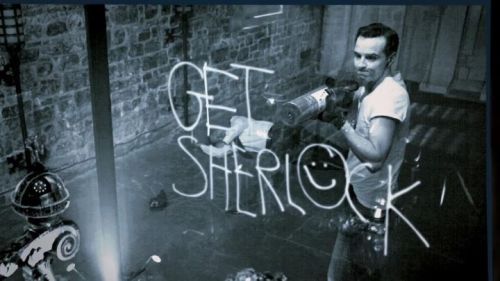Final vertical velocity given vertical displacement: vf² = vyi² + 2g(xi-xf)
vyi²=0m/s 2g=19.6m/s² xi=13.716m xf=0m vf² = 0 + 19.6(13.716-0)
This
means that in a perfect system, meaning no air resistance, Sherlock
would have been falling at 16.4m/s at the time of impact.
Final vertical velocity given time: vyf = vyi + gt
vyf =16.4m/s vyi=0m/s g=9.81 m/s² t=? 16.4 = 0 + 9.81t
This means Sherlock's fall would have taken 1.67s in a perfect system.
How much kinetic energy did Sherlock have on impact? mgh=GPE
m=71.66759446kg g=9.81m/s² h=13.716m (71.6675944)(9.81)(13.716) = 9640J
Because GPE=KE, Sherlock's kinetic energy was also 9640J.
That fall would have killed anyone, so how is Sherlock still alive?




